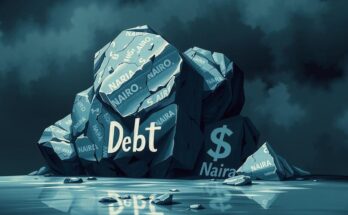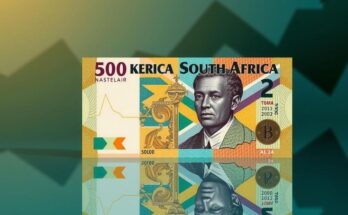As of February 2025, Nigeria’s inflation rate has eased to 23.18%, with significant contributions from food prices. The report lists the ten most expensive states, led by Edo at 33.6%. Overall, price increases are slowing, but certain regions, particularly urban areas, continue to experience rising costs driven largely by food inflation.
As of February 2025, Nigeria’s headline inflation rate has eased to 23.18%, indicating a decrease for the second consecutive month from January’s 24.48%. This represents a 1.30% decline compared to January and an impressive reduction of 8.52 percentage points from February 2024’s 31.70%. The drop is attributed to moderating food inflation and decreased cost pressures in several consumer areas.
Food and non-alcoholic beverages accounted for the most significant contribution to the inflation rate, affecting it by 9.28% on a year-on-year basis. Additional contributors included sectors such as transportation, housing, accommodation services, and education, among others. Month-on-month assessments highlighted food prices consistently as the primary influence, representing a contribution of 0.82% to inflation, trailed by accommodation services and transportation at 0.26% and 0.22%, respectively.
Urban inflation was recorded at 25.15% in February 2025, showing a decrease from the previous year’s rate of 33.66%. Month-on-month, urban inflation was 2.40%, indicating a slower rise in prices. Conversely, rural inflation was lower at 19.89%, reflecting a 10.09% decline compared to a year earlier, with a month-on-month growth rate of 1.16%.
The year-on-year food inflation rate stood at 23.51% in February 2025, a notable decrease from 37.92% in February 2024. This decrease is partially attributed to the adjustment of the base year for measurements. Month-on-month food inflation was pegged at 1.67%, indicating lower price increases than in prior months. Price reductions were observed in staple food items such as yam tubers and maize flour.
Core inflation, which excludes food and energy prices, recorded a year-on-year figure of 23.01%, down from 25.13% in February 2024. On a month-on-month basis, core inflation was documented at 2.52%, reflecting moderate price increases in non-food items. Amidst persistent inflationary pressures, households and businesses throughout Nigeria continue to face rising costs, especially in states experiencing the fastest upticks in living expenses.
The following is a ranking of the ten most expensive states to live in Nigeria as of February 2025:
1. Edo – 33.6%: This state leads with high food inflation at 35.1%, driving the cost of living up significantly.
2. Enugu – 30.7%: Food inflation is high at 31.6%, indicating a substantial cost increase across the board.
3. Sokoto – 30.2%: Food prices surged by 38.3%, marking a considerable inflationary influence on living costs.
4. Imo – 30.1%: With food inflation at 29.0%, other factors also contribute tothe high inflation rate.
5. Zamfara – 29.3%: Food prices remain elevated, but they are not the primary inflation contributor.
6. Abia – 29.2%: This state’s inflation rate reflects a moderate increase in prices.
7. Gombe – 26.5%: Higher food inflation continues to drive costs in the region.
8. Ogun – 25.8%: The state’s inflation reflects rising costs in various sectors.
9. Nasarawa – 25.3%: Significant increases in food prices influenced the inflation rate.
10. Ebonyi – 25.1%: Despite a reduction in overall prices, this state remains on the list for high inflation rates.
These statistics reflect vital trends in the cost of living, predominantly driven by food prices across various states in Nigeria, impacting households and businesses alike.
In summary, Nigeria’s inflation landscape for February 2025 indicates a declining trend in overall costs, yet certain states still experience substantial inflationary pressures, particularly from food prices. Edo emerges as the most expensive state, followed closely by Enugu and Sokoto. The data suggest that the cost of living remains a significant challenge for many households and businesses in the country, particularly in regions where inflation rates are markedly high. Maintaining close observance of these trends is essential for understanding the broader economic conditions affecting residents across Nigeria.
Original Source: nairametrics.com




